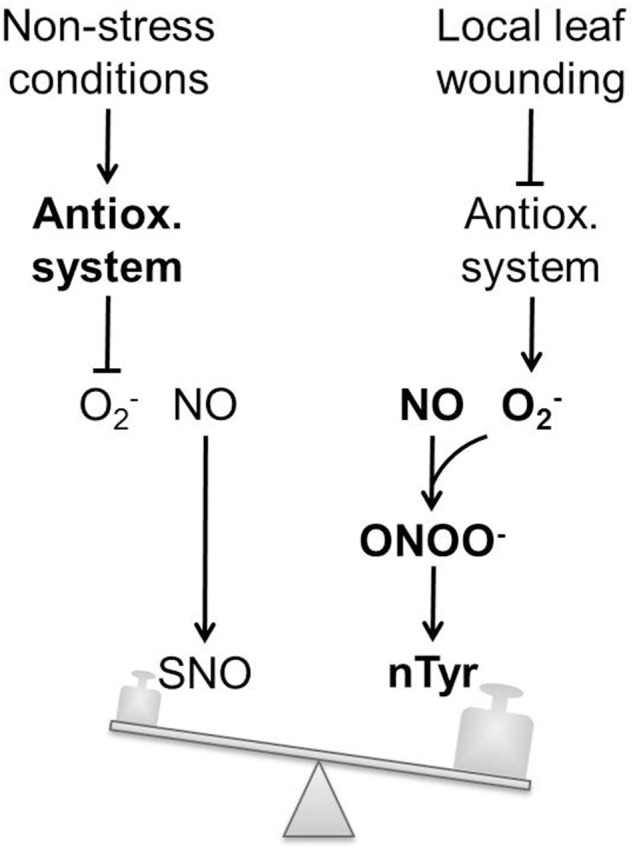Figure 6.

Balance model of wound-induced NO- and redox-signaling in the EFP. Under non-stress conditions low levels of O2- levels are maintained by the antioxidant system. Basal NO production in the EFP causes protein S-nitrosylation. Local leaf wounding triggers a systemic inhibition of the antioxidant system. Subsequent simultaneous accumulation of O and NO facilitates ONOO− formation and tyrosine nitration. Hence tyrosine nitration is an indirect evidence for both O as well as NO synthesis within the pumpkin EFP. O has a very high affinity for NO. Therefore, tyrosine nitration is favored over S-nitrosylation after wound-induced O accumulation. SNO, S-nitrosothiols; nTyr, nitrotyrosine.
